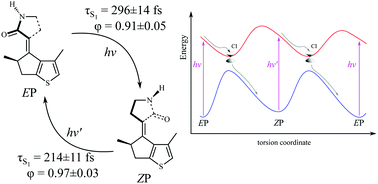Design and photoisomerization dynamics of a new family of synthetic 2-stroke light driven molecular rotary motors†
Abstract
A new family of light driven molecular rotary motors, which can be synthesized from easily available precursor compounds and which are capable of completing a full 360° revolution by two photoisomerization steps only, is proposed. The non-adiabatic molecular dynamic simulations show that the photoisomerization steps of the motor's working cycle occur on an ultrafast time scale (ca. 200–300 fs), have a very high quantum yield of isomerization (0.91–0.97), and display high selectivity of torsion in the same direction. It is expected that the new motor should remain operational at lower temperatures than the currently existing motors.



 Please wait while we load your content...
Please wait while we load your content...